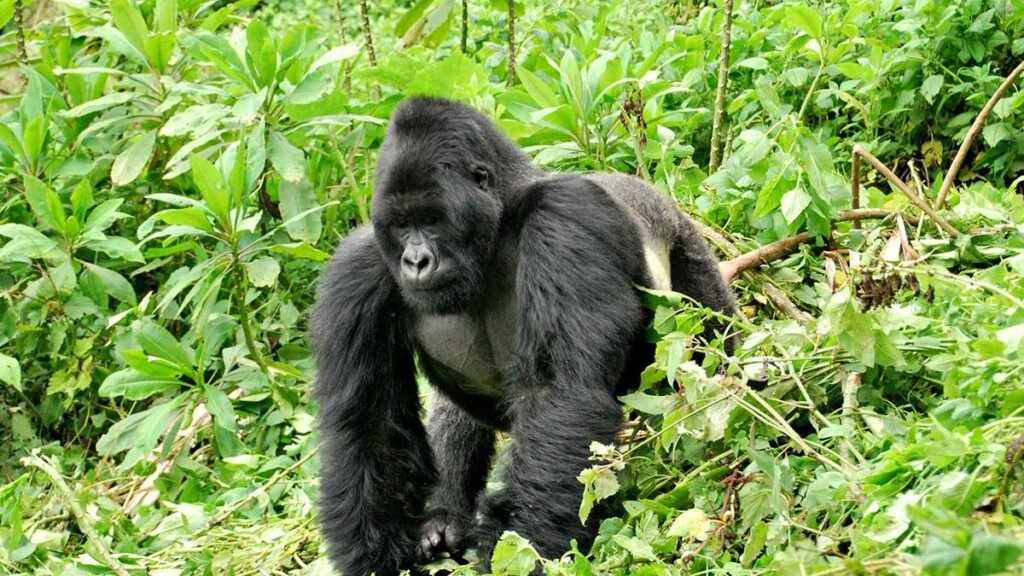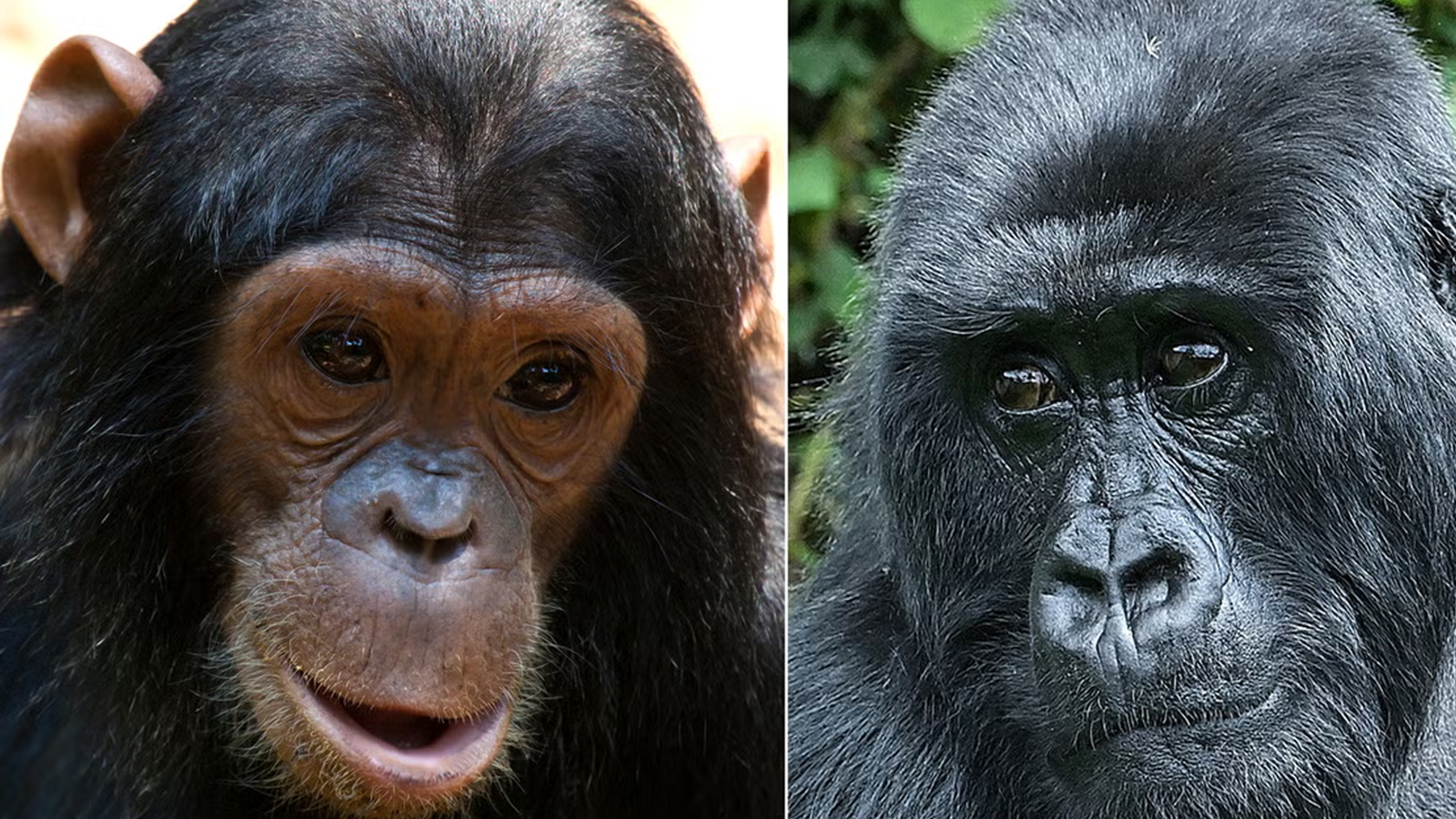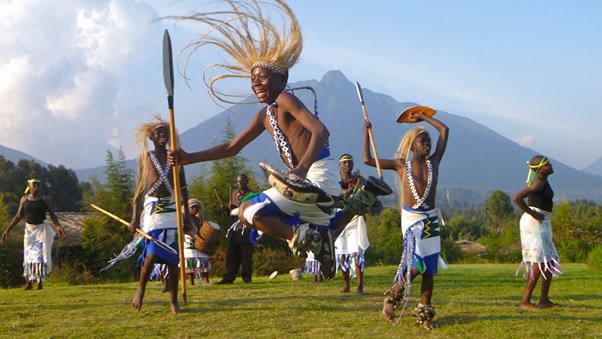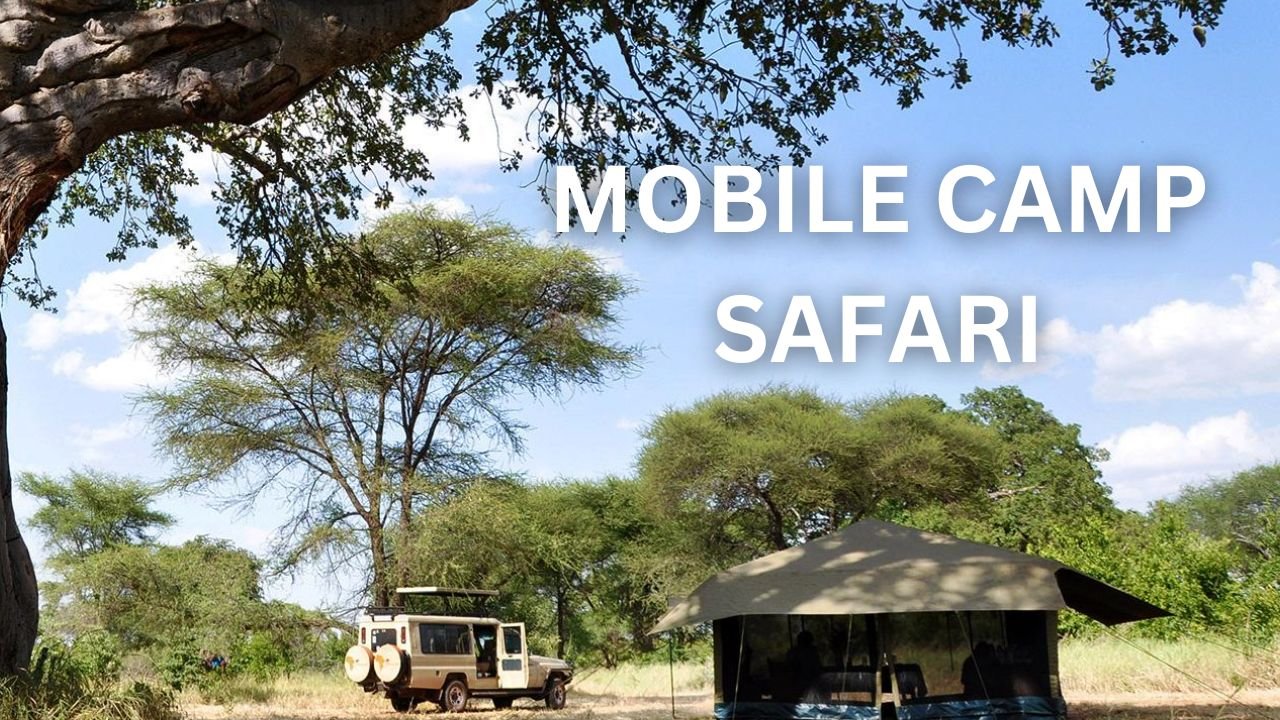
- Research and Conservation: Gorilla habituation in Bwindi Impenetrable National Park allows researchers to study the behavior, ecology, and social dynamics of wild gorilla populations. By observing habituated gorillas, scientists can gather valuable data on their feeding habits, reproductive patterns, communication, and responses to environmental changes. This information contributes to our understanding of gorillas and aids in their conservation.
- Human-Gorilla Interaction: Gorilla habituation helps acclimate wild gorillas to the presence of humans in a controlled and gradual manner. By habituating gorillas to tolerate human proximity, it enhances the potential for positive human-gorilla interactions. This is important for both research purposes and sustainable tourism activities, as habituated gorillas can be observed by tourists without causing significant disturbance to their natural behavior.
- Sustainable Tourism: Habituated gorillas in Bwindi Impenetrable National Park are a major attraction for tourists interested in wildlife experiences. Gorilla habituation creates opportunities for responsible and sustainable tourism, where visitors can observe habituated gorillas in their natural habitat. Tourism generates revenue that can support conservation efforts, local communities, and raise awareness about the importance of protecting gorilla populations and their habitats.
- Conservation Awareness: Habituated gorillas in Bwindi Impenetrable National Park act as ambassadors for their species, showcasing the beauty and uniqueness of these endangered animals. By providing opportunities for people to see gorillas up close, gorilla habituation helps raise awareness about the need for gorilla conservation and the importance of protecting their habitats. This increased awareness can lead to support for conservation initiatives and the implementation of sustainable practices in the regions where gorillas live.
- Human-Wildlife Conflict Mitigation: Habituated gorillas that are tolerant of human presence can help mitigate human-wildlife conflicts. By habituating gorillas, it becomes easier for local communities and park authorities to monitor and manage interactions between gorillas and nearby human settlements. This can reduce the likelihood of negative encounters and promote peaceful coexistence between humans and gorillas.
Process: Gorilla Habituation for Conservation and Discovery
The process of gorilla habituation involves several steps that are carried out over a period of time. Here is a general outline of the process:- Identification and Selection: The process begins with the identification and selection of a specific wild gorilla group for habituation. This is usually done based on factors such as the group’s location, behavior, and the feasibility of habituating them.
- Initial Observation: Researchers and trackers initiate the habituation process by conducting initial observations from a safe distance. This allows them to gather information about the gorilla group’s behavior, composition, and responses to human presence.
- Gradual Approach: Over time, the researchers start to gradually approach the gorillas, keeping a respectful distance to avoid causing any distress or disturbance. This helps the gorillas become familiar with the presence of humans without feeling threatened.
- Daily Presence: Researchers and trackers maintain a daily presence in the vicinity of the gorilla group, spending extended periods nearby. This consistent presence helps the gorillas become accustomed to human activities and reduces their fear or aggression towards humans.
- Increasing Proximity: As the habituation progresses, the researchers aim to get closer to the gorillas. This involves slowly closing the distance between the researchers and the gorilla group, always ensuring the safety and well-being of both humans and gorillas.
- Minimizing Reaction: During habituation, efforts are made to minimize the gorillas’ reactions to human presence. This includes maintaining calm and non-threatening behavior, minimizing sudden movements or loud noises, and avoiding direct eye contact with the gorillas.
- Duration and Tolerance: The habituation process continues until the gorilla group exhibits a high level of tolerance towards the presence of humans. This can take anywhere from several months to a couple of years, depending on the individual gorilla group in Bwindi and their progress.
- Habituation Completion: Once the gorillas are considered habituated, they are generally more relaxed and tolerant of human observers. This allows for activities such as gorilla trekking or research visits, where tourists or researchers can have limited, regulated access to the habituated group.
Habituation Guidelines: Gorilla Habituation for Conservation and Discovery
Habituation guidelines are essential to ensure the well-being of gorillas and the safety of researchers, trackers, and tourists involved in the habituation process. While specific guidelines may vary depending on the location and conservation organizations involved, here are some common principles and considerations:- Minimum Distance: Maintain a minimum distance from gorillas to avoid direct contact and minimize disturbance. This distance is typically several meters or more, ensuring that gorillas feel comfortable and not threatened by human presence.
- Non-Intrusive Behavior: Researchers, trackers, and tourists should behave in a non-intrusive manner, avoiding sudden movements, loud noises, or actions that may alarm or provoke the gorillas. This helps maintain a calm and relaxed atmosphere during observations or visits.
- Limited Time: Limit the duration of interactions with habituated gorillas to minimize stress and interference with their natural behavior. Guidelines often specify a maximum time limit for each visit to ensure that gorillas are not overwhelmed by human presence.
- Group Size: Limit the number of people allowed to visit habituated gorillas at a given time. This helps prevent overcrowding and reduces the potential impact on gorillas’ behavior and habitat. Group sizes are typically small to ensure a more intimate and controlled experience.
- No Touching: Strictly prohibit any form of physical contact with gorillas. Touching gorillas can transmit diseases between humans and gorillas or disrupt their natural behavior. Respect for their personal space is crucial for their health and well-being.
- Silence and Whispering: Maintain a quiet and calm environment during observations or visits. Excessive noise or loud conversations can disturb gorillas and disrupt their natural behavior. Researchers, trackers, and tourists are often encouraged to speak softly or use whispering voices.
- No Feeding: Prohibit feeding gorillas under any circumstances. Gorillas have specific dietary requirements, and human food can be harmful to their health. Feeding can also lead to dependency on human resources and alter their natural foraging behavior.
- Follow Guide Instructions: Visitors participating in gorilla habituation activities should strictly follow instructions given by trained guides and rangers. These individuals have in-depth knowledge of gorilla behavior, safety protocols, and the guidelines set forth for habituation visits.
- Respect Boundaries: It is essential to respect the boundaries set by guides and trackers during gorilla habituation visits. These boundaries help maintain a safe distance and prevent any interference with the gorillas’ natural behavior or habitat.
- Responsible Photography: When taking photographs or videos, maintain a respectful distance and use non-intrusive camera equipment. Flash photography is typically prohibited, as it can startle or disturb gorillas.
Research and Monitoring:
Discover the scientific research conducted during habituation. Researchers collect valuable data on gorilla behavior, social dynamics, feeding habits, and other aspects to enhance our understanding of these magnificent animals.Benefits and Challenges:
Explore the benefits and challenges associated with gorilla habituation. Understand how habituation supports conservation efforts, tourism, and local communities, while also considering the potential risks and ethical considerations involved.Ecotourism:
Ecotourism refers to responsible travel to natural areas that conserves the environment, sustains the well-being of local communities, and involves interpretation and education. It is a form of tourism that aims to minimize negative impacts and promote conservation, while providing economic and social benefits to local communities. Gorilla habituation and gorilla trekking are often considered examples of ecotourism activities. Here are some key aspects of ecotourism in the context of gorilla conservation:- Conservation Focus: Ecotourism, including gorilla habituation and gorilla trekking, places a strong emphasis on conservation. By generating revenue through tourism, protected areas and conservation organizations can fund vital conservation efforts such as anti-poaching patrols, habitat restoration, and community-based conservation initiatives.
- Environmental Responsibility: Ecotourism in gorilla habitats aims to minimize negative impacts on the environment. Strict guidelines are in place to prevent disturbance to gorillas and their natural habitats, including maintaining distance, limiting group sizes, and following designated trails. This helps ensure the preservation of gorilla habitats and minimizes the ecological footprint of visitors.
- Community Engagement: Ecotourism endeavours to involve and benefit local communities. Revenue generated from gorilla tourism is often shared with local communities through various mechanisms, such as community development projects, education initiatives, healthcare, and infrastructure improvements. This helps create a sense of ownership and provides economic incentives for local communities to support gorilla conservation.
- Cultural Exchange: Ecotourism provides opportunities for cultural exchange between visitors and local communities. Visitors can learn about the traditions, customs, and ways of life of the communities living in gorilla habitats. This exchange of knowledge and experiences can foster mutual understanding and appreciation.
- Education and Awareness: Ecotourism promotes education and awareness about gorilla conservation. Visitors are often provided with information about gorilla behavior, threats to their survival, and the importance of conservation efforts. This knowledge contributes to public awareness and support for gorilla conservation on a broader scale.
- Sustainable Economic Benefits: Gorilla tourism generates economic benefits that can contribute to the sustainable development of local communities. Jobs are created in various sectors, including guiding, hospitality, transportation, and handicrafts. This economic stability can reduce pressures on natural resources and provide alternative livelihoods that are less harmful to the environment.
- Research and Monitoring: Ecotourism activities, such as gorilla habituation, can support scientific research and monitoring efforts. Researchers and conservationists can gather valuable data on gorilla behavior, health, and population dynamics through observations during habituation or trekking activities. This information contributes to ongoing conservation initiatives and helps shape future conservation strategies.


